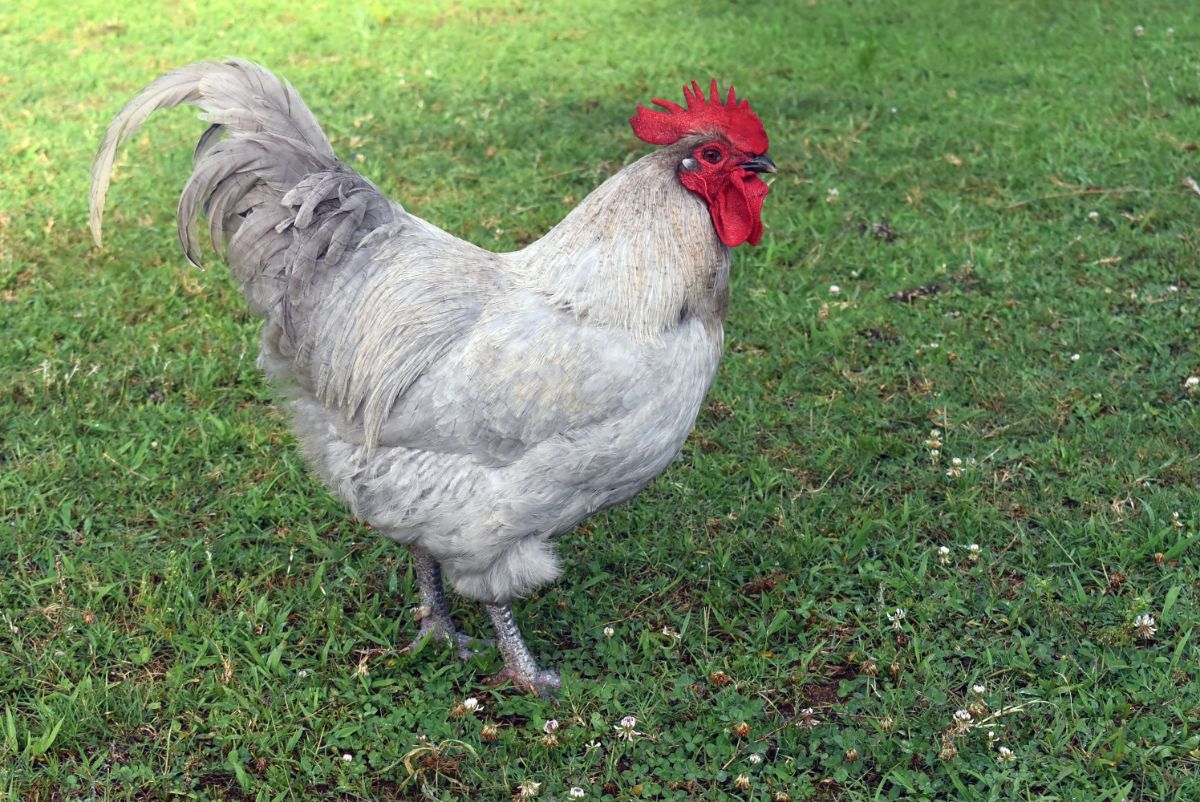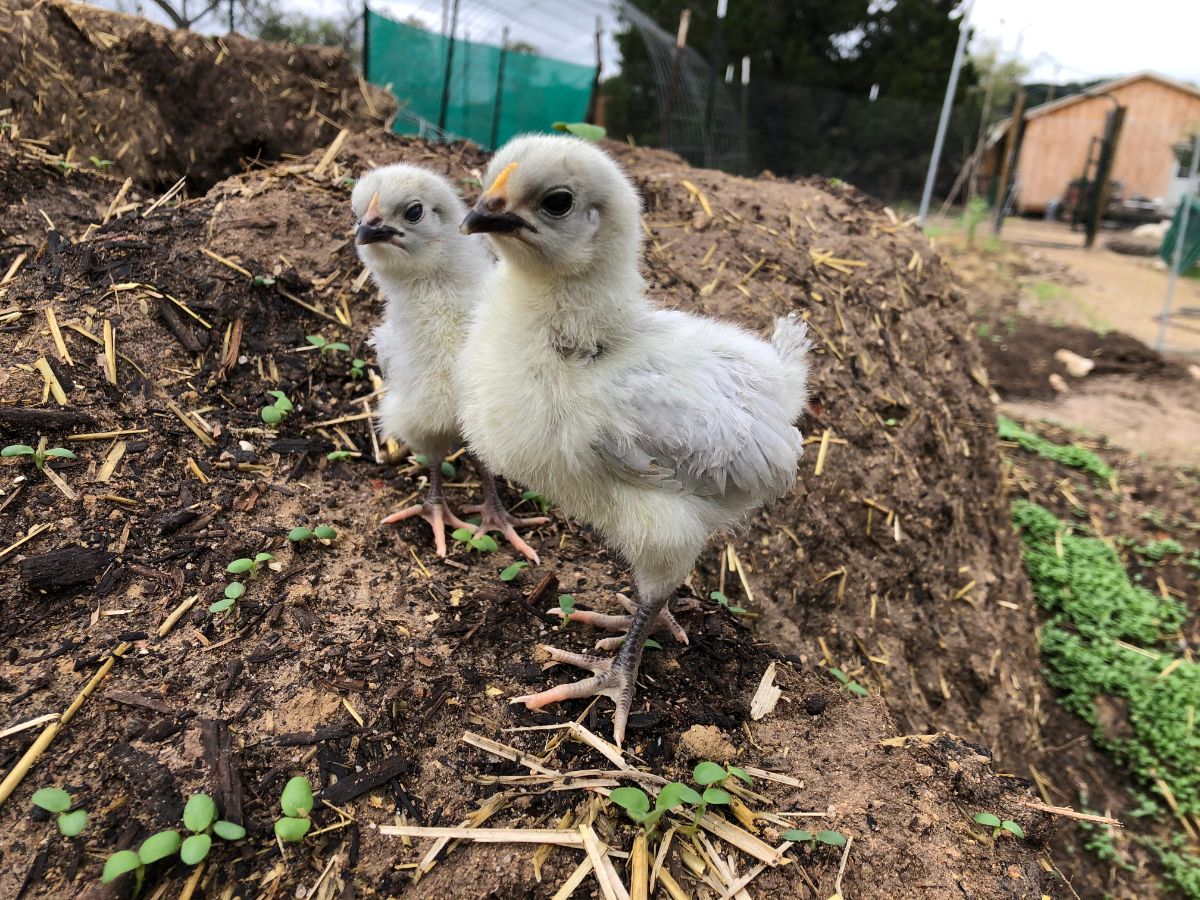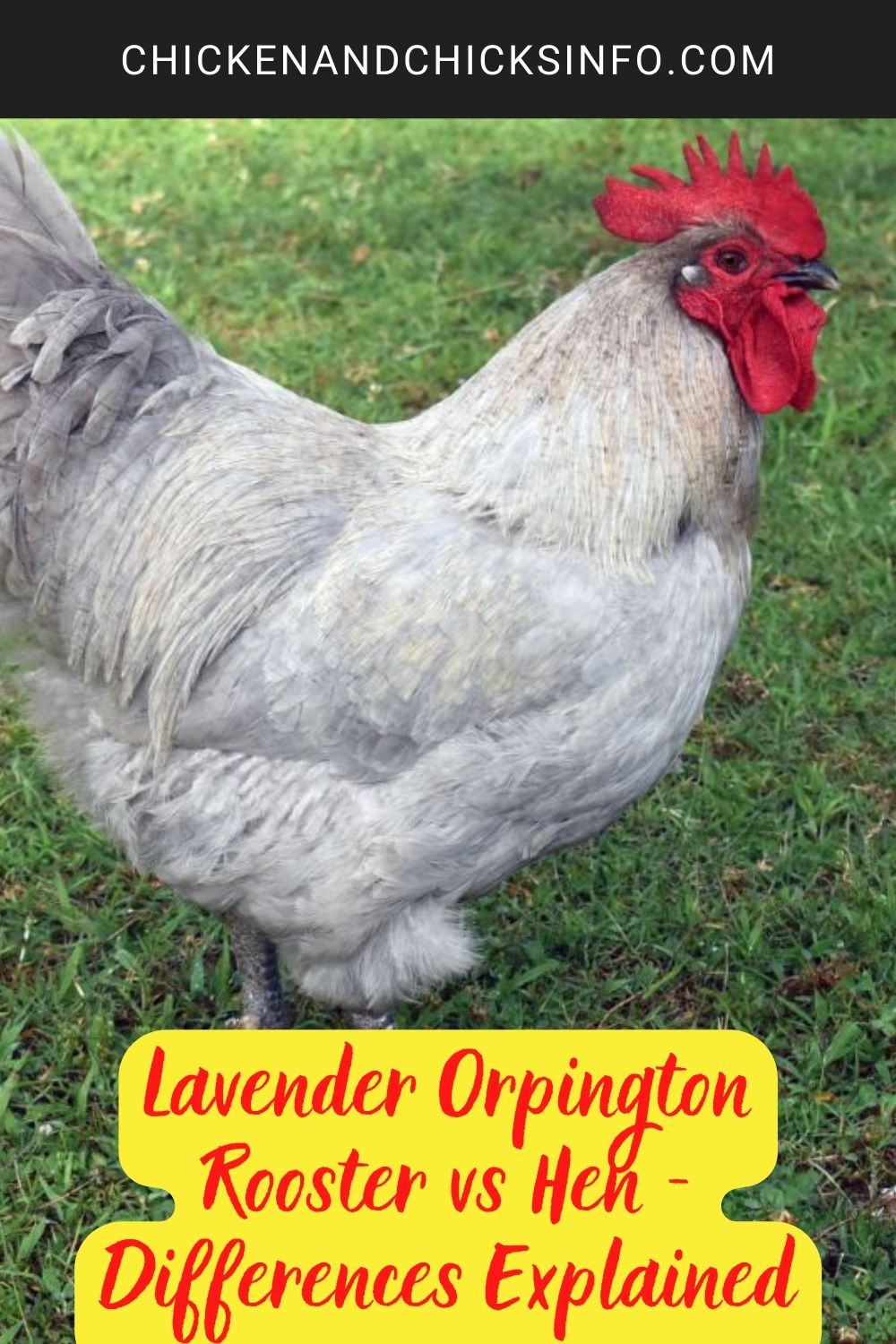Need some help telling a Lavender Orpington Rooster vs Hen apart?

Created in England in the 1880s, the Orpington is a beautiful breed of chicken - and the lavender Orpington is (in my opinion) one of the most stunning colored chickens.
They’re called ‘lavender’ Orpingtons due to their lavender-colored plumage.
While not officially recognized by the US or UK poultry standard governing bodies, lavender Orpingtons are much sought after due to their unique coloring.
If you’re raising some lavender Orpingtons - or even if you have some adult birds - here’s how to tell apart roosters from hens:
Jump to:
- How Do You Tell if a Lavender Orpington Is a Rooster?
- Lavender Orpington Hen vs Rooster 6-8 Weeks’ Old
- Lavender Orpington Hen vs Rooster 12-14 Weeks’ Old
- Other Tips for Telling Lavender Orpington Roosters from Hens
- Differences Between Adult Lavender Orpington Roosters vs Hens
- At What Age Do Lavender Orpington Roosters Crow?
- In Summary
How Do You Tell if a Lavender Orpington Is a Rooster?
There are a number of physical characteristics that help separate roosters from hens, and they become more obvious as birds age.
Here is a look at some of the main milestones:
Related - How Much to Feed Orpington Chickens?
Lavender Orpington Hen vs Rooster 6-8 Weeks’ Old

Unless you have experience sexing chicks, it’s almost impossible to do so before they’re about 6-8 weeks old and start developing combs and wattles.
Roosters’ combs and wattles are typically redder than hens’, as well as growing a little faster and being bigger.
It can still take some days or weeks to be sure if you have a rooster or a hen, and it helps if you have a bunch of chicks to compare side by side.
Orpingtons don’t have the largest combs or wattles, either, so it’s not as easy as it is with some breeds.
Lavender Orpington Hen vs Rooster 12-14 Weeks’ Old
By around 10-12 weeks of age, you’ll be able to get a better idea of whether a chicken is a male or a female.
Around this age, chickens typically start to get pronounced hackle feathers, which are the feathers around their necks.
Their saddle feathers will also be developing, which are the feathers on their sides and at the base of their tails.
Roosters’ feathers are much longer and pointier than hens’. It’s really quite obvious when you compare a hen and rooster side by side.
If you look at a fully mature rooster you’ll see what I mean. Their feathers and their overall shape is much bigger than a hen, and you’ll be able to see this developing as their feathers fill out.
Related - Silver Laced Wyandotte Rooster vs Hen: Differences Explained
Other Tips for Telling Lavender Orpington Roosters from Hens

There are many other physical characteristics and personality traits that can help you tell the difference between a hen and a rooster, some of these are:
- Roosters tend to roam on their own and are more aggressive, while hens stick together
- Roosters’ plumage is shinier
- Hens have thinner legs and smaller feet, which is something you can often notice as they age
- Roosters have a more confident strut about their demeanor from a young age
It can be really tricky telling roosters and hens apart at first, especially when you’re not sure what you’re looking for.
In fact, it’s amazing how many people still don’t know much about roosters as they’re in much less demand than hens as roosters don’t lay eggs.
It’s still good to have a rooster with a flock of hens though as they help bring some balance and order to the hierarchy.
Differences Between Adult Lavender Orpington Roosters vs Hens
If you’re trying to tell the difference between fully grown, mature Lavender Orpington chickens, it’s not difficult.
Once chickens are about 20 weeks old, they should have all of their adult plumage. This makes it easy to tell roosters and hens apart by looking at them.
Roosters are much larger and have more pronounced tail feathers and a thicker plumage around their saddle and hackle feathers.
At What Age Do Lavender Orpington Roosters Crow?
There is one sure-fire way of knowing whether a chicken is a rooster or a hen, and that’s when you hear that familiar, “cock-a-doodle-do” sound.
I will say that there are some rare instances when hens crow, but it’s incredibly unlikely so it’s safe to assume you have a rooster if your chicken is crowing.
Crowing is one of the reasons why it’s important to know if a chick is a male before it grows up, as roosters are often not allowed in urban settings.
You may be happy to finally find out the sex of your chicken, but I don’t think your neighbors will be as happy to find out with an early morning wake-up call!
If you want to keep a rooster and not deal with the loud crowing, I recommend checking out no-crow rooster collars.
These are basically small bands that go around the rooster's neck, and without causing them distress or much discomfort it muffles their crowing.
In Summary
Most owners will tell you that Lavender Orpingtons are stunning-looking birds, but they’re not that different from most breeds of chicken when it comes to looking at the roosters vs hens.
There are some very obvious physical characteristics, as well as behavioral differences that make it easy to tell the difference.
You just need to wait until your chicks are old enough to start developing their wattles, combs, and feathers so you’re able to tell the difference in most cases.





